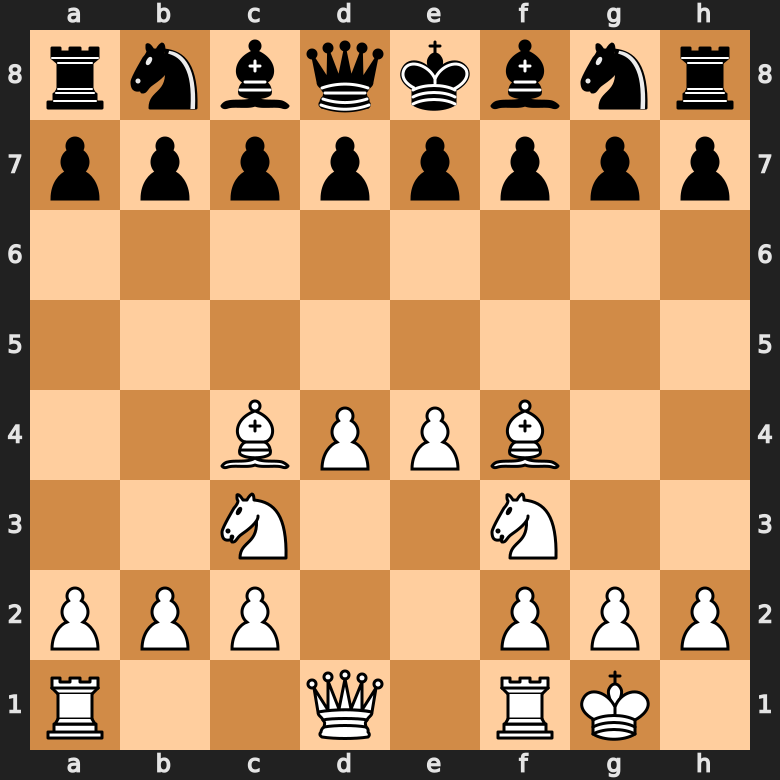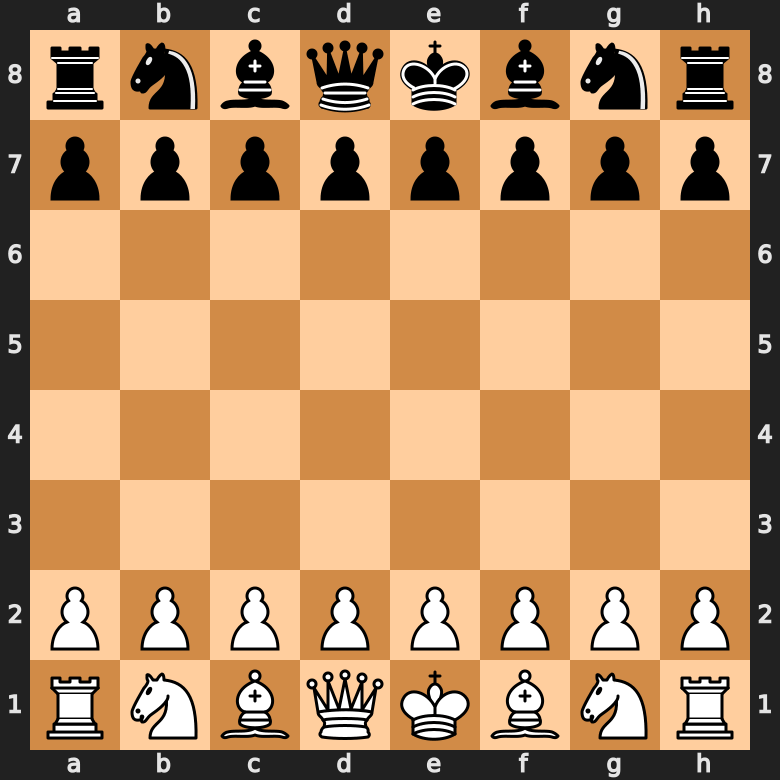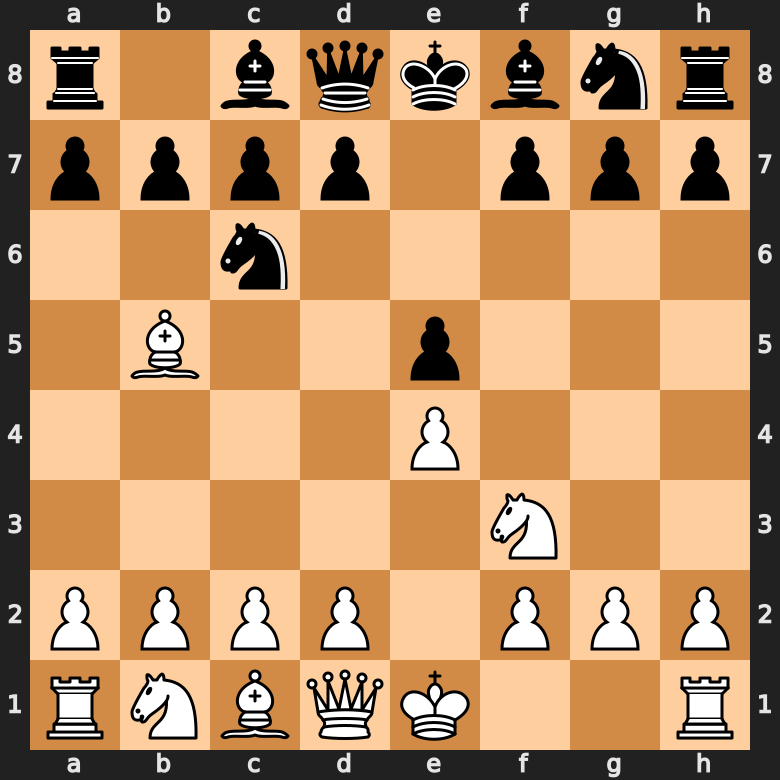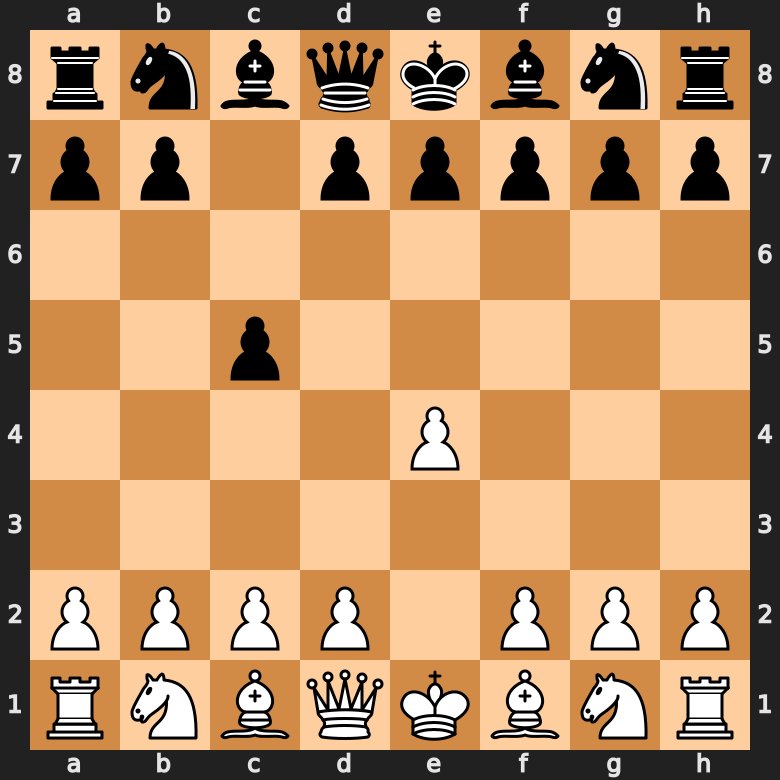Chess Opening – The Ultimate Guide To Start Your Game
The opening is the first phase in every game of chess. It is defined as roughly the first 10 moves, after which the game transitions into the middlegame. Beginners often feel confused and overwhelmed with the sheer amount of possible moves. But fear not: Opening theory is not as complicated as it seems. Let’s do a deep-dive into different chess openings, strategies and a bit of theory.
7 Crucial Strategies for the Chess Opening
With the (seemingly) unlimited amount of moves in chess, it is impossible to remember every possible opening. However, during thousands of years of chess history, players have discovered a few key principles, that should be followed at all times during the opening. Let’s have a look at seven of them.
1. Focus on the Center
One of the most important principles in openings theory is to focus on controlling the center. Center control is considered an important strategic goal, as tactical battles often take place on the central four squares.
Also, pieces that are placed in the center of the board can easily be moved to almost any position on the board, providing a strategic advantage. A theoretical, optimal control of the center would look something like this:

Notice how each of White’s minor pieces either attacks a center piece or defends a pawn already in the center. Obviosuly, this is a hypothetical position, but it illustrated well what we should be striving for during the chess opening.
2. Move Every Piece Just Once (If Possible)
The opening is mostly a game of speed. Whoever manages to develop all their pieces first, has a lasting advantage into the middlegame and endgame. Which is why you should be trying to get each piece into a good position as quickly as possible. In turn, moving pieces more than once is suboptimal, as that time could be spent developing other pieces. So, unless it is unavoidable, try to move each piece just once in the opening, until you are satisfied with the position of each piece.
3. Castle Early
The king starts the game somewhat vulnerable, straight in the middle of the board. For that exact reason, it is important to protect your king – ideally by castling him into safety. By castling, you place the king into a safe position behind a wall of pawns, making attacks on him significantly more difficult.
But castling not only protects your king, it also activates one of your rooks, by moving it closer to the center and out of the corner. If it weren’t for castling, developing your rook would be much harder, as it is boxed into the corner, surrounded by pawns and the knight. This ties in neatly with our next point, which is to connect your rooks during the opening in chess.

4. Connect Your Rooks
A good general goal to have during your development is to connect both of your rooks. Since both rooks start the game on the back rank, connecting the two means moving all other pieces (except the king) away from the back row, towards the center of the board. But besides it being a good goal to have in the opening, there are also strategic advantages to have rooks, that protect each other.
The back rank is generally a sensitive place, as your king is placed on it with little options for fleeing behind the wall of pawns. Having both rooks on the back rank and protecting each other – at least early in the game – is a good way to secure the back rank from infiltration by your opponent.
5. Trade Favorably
To be fair, trading favorably is a tip that applies to all phases of a chess game. But, it is especially important in the opening, as trades in the opening set the stage for the whole game, leaving players with lasting advantages (or disadvantages). Generally, a bishop pair is said to be slightly stronger than a knight pair for most players, so trading your knights for their bishops is usually advisable. Also, when you have a bishop pair, you want to trade off pawns to make room for your bishops to move, increasing their relative value.
6. Use Your Queen Wisely
Since the queen is the strongest piece in chess, you might think it would be beneficial to get her out in the open as quickly as possible. While the reasoning is correct, actually, you want to be very careful with activating your queen early one.
Since the queen is such a valuable piece, it cannot be defended properly against attacks from lesser pieces such as rook, knight, or bishop. In turn, the queen has to retreat after being attacked, losing valuable tempo. This all comes back to the principle of ideally moving each piece just once in the opening.

7. Avoid Weak Pawns
The opening sets the stage for the middlegame and endgame, in both of which the pawn structure plays a central role. Knowing this, we can start thinking ahead and improving our odds in the later phases of the game, by setting up a strong pawn structure in the opening.
A strong pawn structure is characterized by having no isolated or doubled pawns and most pawns protecting each other in a so-called pawn chain.
Chess Opening Theory: Open, Semi-Open and Closed Games
Did you know that there are more than 1300 openings and variants that have their own names? Obviously, with the sheer amount of openings in chess, we need a way to cluster and organize them. One way to do that, is by dividing them into different kinds of games, that usually evolve from such openings. In this guide, we’ll look at the three main classifications of chess openings.
Open Games
Open Games begin with the move sequence 1. e4 e5, meaning both White and Black move their King’s pawn forward to squares. 1. e4 is the most popular move for White and generally a good choice, since it provides many benefits for the development:
- It occupies and attacks the center with the pawn
- It opens the diagonal for the light squared bishop.
- It frees a diagonal for the queen
For those reasons, legendary grandmaster Bobby Fisher called 1. e4 “Best by test”. Open Games are a solid choice for beginners, as they often involve lots of tactical gameplay, with motives such as pins. In turn, playing lots of Open Games allows you to get a good grasp on basic tactical elements in chess.
There are hundreds of different Open Games as well as variations; here is a small collection of some notable ones. Study those and you have a good foundation in Open Games:
- Ruy Lopez: 1. e4 e5 2. Nf3 Nc6 3. Bb5
- Italian Opening: 1. e4 e5 2. Nf3 Nc6 3. Bc4
- Four Knights Game: 1. e4 e5 2. Nf3 Nc6 3. Nc3 Nf6
- Petrov’s Defense: 1. e4 e5 2. Nf3 Nf6
- King’s Gambit: 1. e4 e5 2. f4
Semi-Open Games
Semi-Open Games are a more general category compared to Open Games. Every game of chess that starts with 1. e4, and Black does not respond with 1… e5, is considered a Semi-Open Game. Those openings tend to lead to asymmetries in the position and offer interesting and exiting play. Semi-Open Games are usually a good choice when playing for a win with Black, at least at grandmaster-level.
- Sicilian Defense: 1. e4 c5
- Caro-Kann Defense: 1. e4 c6
- Scandinavian Defense: 1. e4 d5
- French Defense: 1. e4 e6
Closed Games
The last category we’ll look at are so-called Closed Games. These openings begin with White advancing the queens pawn to d4, with Black responding in symmetry: 1… d5. These moves offer similar advantages as 1. e4 e5 in Open Games:
- Controlling the center by advancing the pawn
- Making way for the bishop’s development
However, in this case, the advancing pawn on the d-file is protected by the queen. This might sound like a minor detail, but it has dramatic effects for the whole game. Closed games are usually a lot more defensive and slow, with rigid pawn structures and barely any open lines.
Some of the most well-known Closed Games include:
- Queens Gambit: 1. d4 d5 2. c4
- London System: 1. d4 d5 2. Bf4
- Slav Defense: 1. d4 d5 2. c4 c6 (a line in the Queens Gambit)
The Best Chess Opening…
… doesn’t exist. Sorry! Since chess openings are studied very well, there are basically no surprises anymore at top-level play. There is no secret “best chess opening” that can crush your opponent no matter what. However, especially for beginners, some
In this section we’ll be working quite a lot with algebraic notation, so in case you need a refresher on chess notation, check out our beginners guide on chess notation.
Spanish Game
The Spanish Opening, also called the Ruy López, begins with the moves 1. e4 e5 2. Nf3 Nc6 3. Bb5:

This is the classic Ruy Lopez Setup. White threatens to trade off the knight on c6, leaving the black e5-pawn undefended. However, this threat is not really an issue for black, as they can win back the captured pawn with a queen in no time.
The Spanish Opening is one of the best-studied and most-played openings in chess. For that reason, the opening is a solid choice for beginners. The main goal of White’s third move is to attack the black knight that defends the central pawn.
Common continuations include:
- Morphy Defense: 1. e4 e5 2. Nf3 Nc6 3. Bb5 a6
- Berlin Defence: 1. e4 e5 2. Nf3 Nc6 3. Bb5 Nf6
- Steinitz Defence: 1. e4 e5 2. Nf3 Nc6 3. Bb5 d6
Silician Defense
The Silician Defense is a real classic in chess. Due to its asymmetric nature, this opening often leads to unpredictable games, in which both players can play for a win. The Sicilian Defense starts with 1. e4 d5:

The Sicilian Defense is the most popular response to 1. e4 by White. From this position, the game usually develops into either the Open Sicilian (3. Nf3) or the Closed Sicilian (3. Nc3).
Due to its aggressive nature, the Silician Defense is a popular choice whenever Black needs to play for a win.
Common continuations for the Sicilian Defense include:
- Open Sicilian: 1. e4 c5 2. Nf3
- Closed Sicilian: 1. e4 c5 2. Nc3
- Grand Prix Attack: 1. e4 c5 2. f4
Italian Game
The last chess opening we’ll portray here is the Italian Game, which starts with 1. e4 e5 2. Nf3 Nc6 3. Bc4:

If you’ve been paying attention, you might’ve noticed, that the Italian Game shares quite the resemblance with the Ruy Lopez – good catch! However, the main attacking point is completely different.
In the Italian Game, White tries to put pressure onto the – generally weak – f7 pawn, by eying it down with the bishop.
Main variations in the Italian Opening:
- Giuoco Piano: 1. e4 e5 2. Nf3 Nc6 3. Bc4 Bc5
- Two Knights Defense: 1. e4 e5 2. Nf3 Nc6 3. Bc4 Nf6
Chess Openings Examined
In this section you’ll find a collection of chess openings, for which we did a deep-dive article:
- Posts not found

